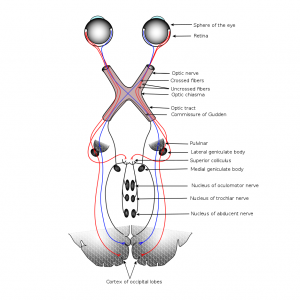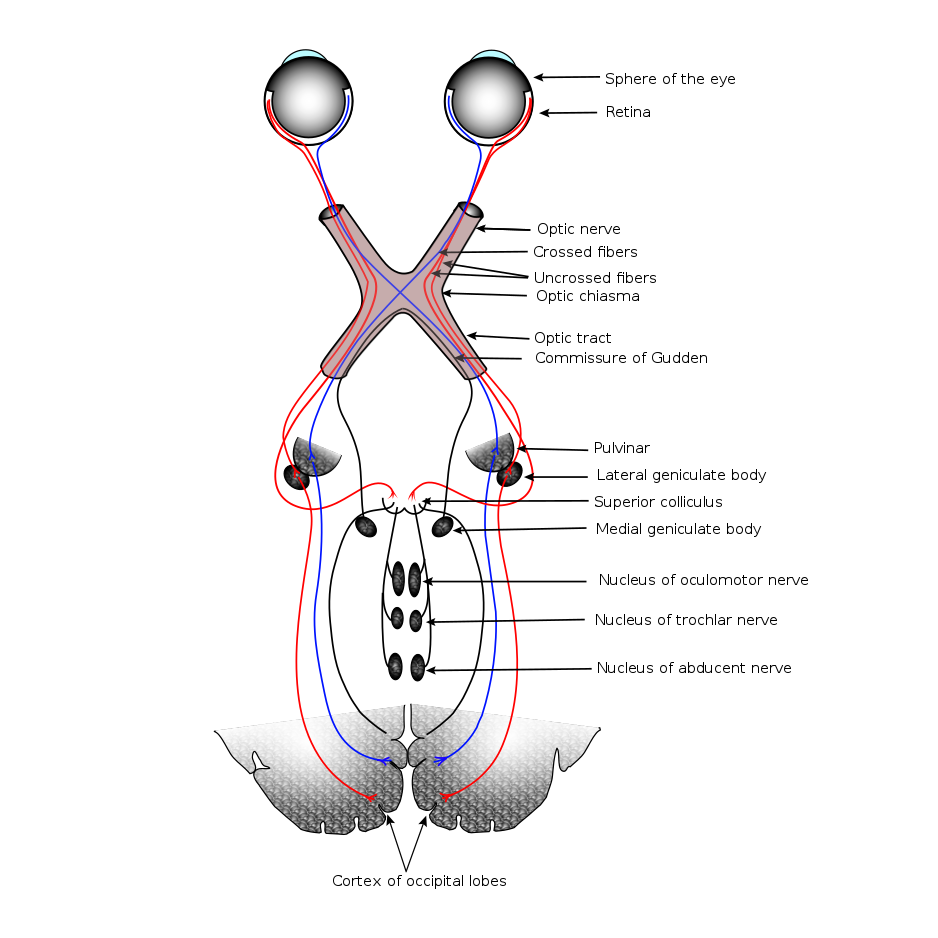Dr. Taka Kuwajima, whose team focuses on optic nerve regeneration and mechanisms that lead to nerve cell death in a variety of ocular diseases has recently identified novel molecular pathways that affect nerve cell death at early and late stages of axon degeneration.

Visual information is conveyed from the eye to the brain via the optic nerve, an assemblage of nerve cells (called axons) that exit directly from the retina and run to the visual centers of the brain. Damage to the optic nerve from a severe injury or disease invariably leads to vision loss, often resulting in blindness. Glaucoma, a chronic disease, also compromises the optic nerve, leading to nerve cell death and vision defects. There are no effective treatments to regenerate nerve cells or to restore connections between the eye and brain once the optic nerve is lost. This is a major barrier in the field and one that must be overcome, given the substantial number of patients suffering from optic neuropathy-associated blindness. Research in the Louis J. Fox Center for Vision Restoration in the Department of Ophthalmology at the University of Pittsburgh focuses on these issues.
Human optic nerve cells lack the ability to regenerate and to re-establish neuronal wiring from the eye to the brain. Additionally, there are no FDA-approved drugs or surgeries that prevent death of the cells that make the optic nerve, block nerve degeneration or stimulate nerve regeneration. Dr. Taka Kuwajima, whose team focuses on optic nerve regeneration and mechanisms that lead to nerve cell death in a variety of ocular diseases has recently identified novel molecular pathways that affect nerve cell death at early and late stages of axon degeneration. Excitingly, he has shown that modulating the activity of these pathways keeps the nerve cells alive and enables axon regeneration in the optic nerve after injury. The team continues to focus on what molecules prevent nerve cell death and which promote nerve cell regeneration. Identification of these molecules is highly significant to recover visual function, ultimately leading to the development of drugs to treat optic nerve injury and glaucoma. Indeed, statins, a widely prescribed drug for high cholesterol, are showing promise as one drug class that we could potentially use to prevent optic nerve cell death and regeneration.
Recent progress by Dr. Issam Al Diri’s laboratory has discovered specific DNA sequences that themselves do not code for genes, yet communicate over long distances to control the activity of certain genes involved in neuron formation and enhancing optic nerve regeneration. Dr. Al Diri’s team has been able to show that these DNA sequences recruit factors important for proper eye formation, and physically reach out to their gene targets through the establishment of DNA loops, which enables them to modulate the expression of these genes during eye development. This exciting discovery could pave the way to a more efficient retinal cell generation from stem cell cultures or even contribute to potential regenerative therapies that restore those lost due to injury or disease.
Research by both Drs. Al Diri and Kuwajima are supported by the Eye & Ear Foundation and the Research to Prevent Blindness where Dr. Al Diri holds a Career Development Award and Dr. Kuwajima holds the Ernest & Elizabeth Althouse/Dolly Green Special Scholar Award.
For the latest news on optic nerve research, subscribe to EEF’s Monthly Newsletter. To support Dr. Kuwajima’s groundbreaking research on optic nerve regeneration, make a donation to the Eye & Ear Foundation.
